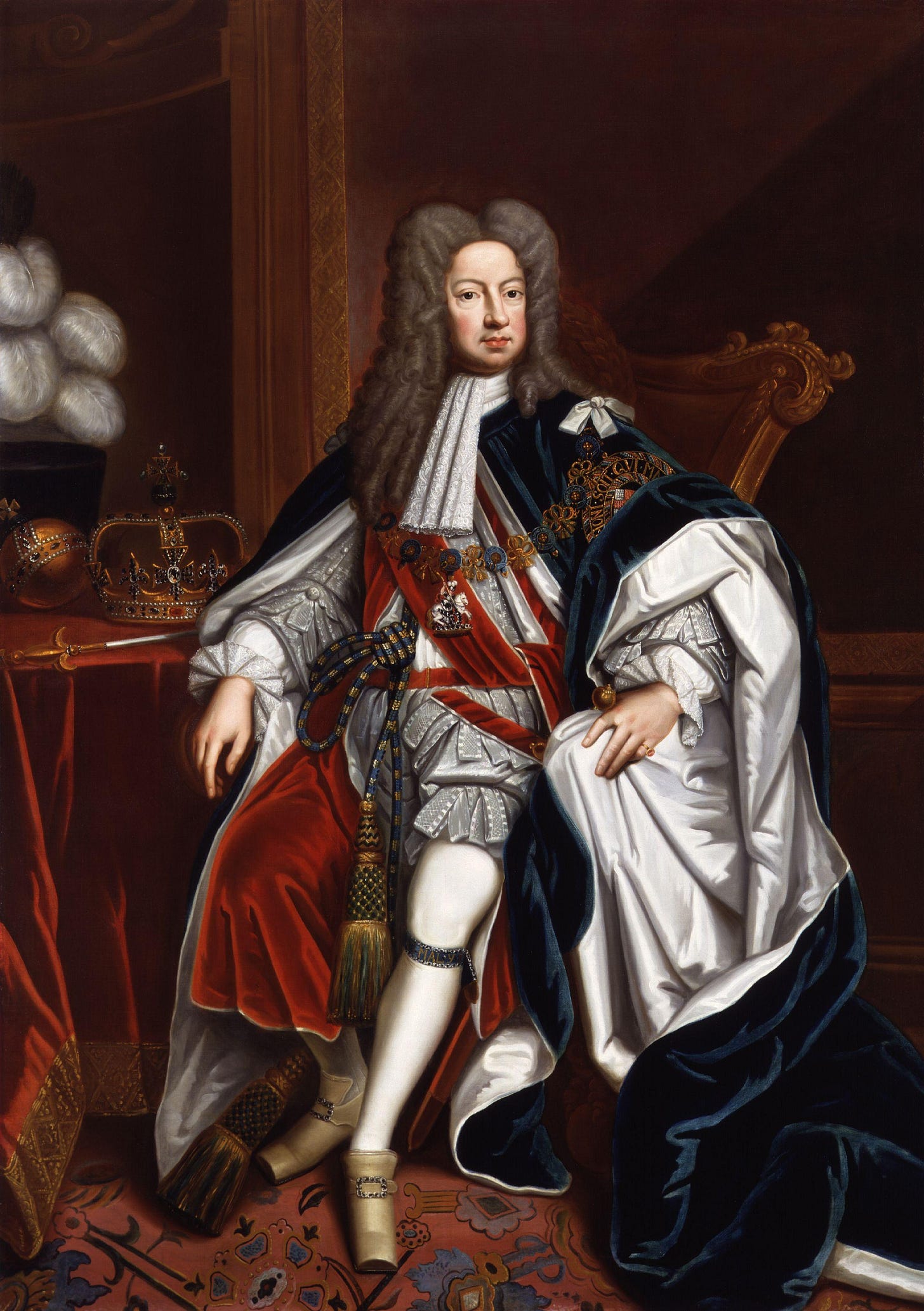George I and the Beginning of the Hanoverian Dynasty
On 1 August 1714, George I, Elector of Hanover, ascended the British throne
On 1 August 1714, George I, Elector of Hanover, ascended the British throne following the death of Queen Anne, the last monarch of the House of Stuart. His accession marked the beginning of the Hanoverian dynasty, a ruling house that would continue through the reigns of several monarchs, including the long-serving Queen Victoria.
The death of Queen Anne presented a significant challenge to the stability of the British monarchy. Despite having borne 17 children, none of Anne's offspring survived to adulthood. This left the line of succession uncertain and politically sensitive. In response to the potential for a Catholic claimant to take the throne, the Act of Settlement 1701 had previously established that only Protestant descendants of Sophia of Hanover (a granddaughter of James I) could inherit the crown.
Although over 50 individuals had a stronger genealogical claim than George, they were all Catholics and therefore barred from the throne under the Act. As the Protestant great-grandson of James VI and I, George was the closest eligible heir.
George was born on 28 May 1660 in Hanover (in modern-day Germany). He held the title of Elector of Hanover within the Holy Roman Empire and had limited connection to Britain prior to his succession. His upbringing, language, and political experience were entirely rooted in continental Europe. When he became king, George I spoke little English and relied heavily on his ministers and advisers, particularly Robert Walpole, who would later be regarded as Britain’s first de facto Prime Minister.
George's accession was met with mixed reactions. Supporters of the Stuart line, known as Jacobites, viewed him as a foreign usurper and continued to support James Francis Edward Stuart, known as the “Old Pretender”, as the rightful king. The tension culminated in the Jacobite Rising of 1715, which sought to restore the Stuart monarchy but was ultimately unsuccessful.
Despite the unrest, George I consolidated his position and presided over a constitutional monarchy in which Parliament held increasing power. His unfamiliarity with British customs and politics led him to take a largely passive role in governance, a trend that helped further the development of the modern parliamentary system.
George I reigned until his death on 11 June 1727, after which he was succeeded by his son, George II. The Hanoverian dynasty would go on to play a significant role in shaping modern Britain, including overseeing the expansion of the British Empire, major political reforms, and the industrial revolution.
Though often regarded as a distant and foreign figure, George I's reign represented a critical transition in British history—securing Protestant succession, reinforcing constitutional governance, and initiating a dynasty that would rule Britain for over a century.
CLICK HERE to read more History and Happenings articles.
If you love history, then you’ll love The Chronicles of St Mary’s series by Jodi Taylor.




